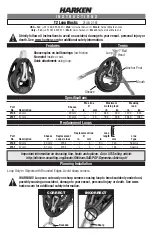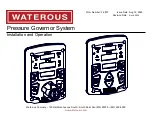
Chapter 4
Using the system
4.1
Calculated parameters
Once the system is commissioned the facilities of data presentation, reflection diagram,
system info etc. can be used to monitor the proper operation of the system.
Wave height parameters are calculated using the measurements of one sensor (the WaveG-
uide OnBoard 2). The water level information is calculated using the non motion compen-
sated heave. And for the directional information, the measurements of all three radars are
analyzed and the directional parameters are calculated. There are two analysis routines:
Wave analysis
The Standard Wave Processing Package (SWAP) is used in performing time and frequency
domain analysis on the measured data to calculate wave parameters. This package is the
standard processing package used by the Dutch government for wave height analysis. It
also meets the standards set by the International Association of Oil & Gas Producers
(OGP). A detailed description of the SWAP package is available on the Radac website
(
The SWAP parameters are calculated every minute using 20 minute data blocks. The 20
minute observation block is chosen as a compromise between short enough to obtain "small"
variance in the statistical parameters and long enough to assume it to be a stationary
process. The time stamp used on SWAP parameters is the mean between the start and end
time of the 20 minute data block.
Tide analysis
The tide parameters H10, H5 and H1 are calculated by averaging measured data over 10
[min], 5 [min] and 1 [min] periods respectively.
Each parameter receives a time stamp central to the block of data that was used for its
calculation. The spectra and parameters that can be calculated by the WaveGuide system
are described in Appendix 1. Due to the large number of parameters, only a selection of the
most commonly used ones is displayed on the user interface. This selection can be modified
by Radac upon request.
4.2
Data logging
A USB storage device can be easily mounted to the WaveGuide processing unit for data
logging. It needs to be said that without taking additional precautions, USB storage is
not a safe method for archiving data. Since power failures can damage USB devices, it is
advised to use an Uninterrupted Power Supply (UPS) together with a high quality USB
device. Having said this, USB storage provides a good backup option while sending data
out over a serial or network connection.
29









































